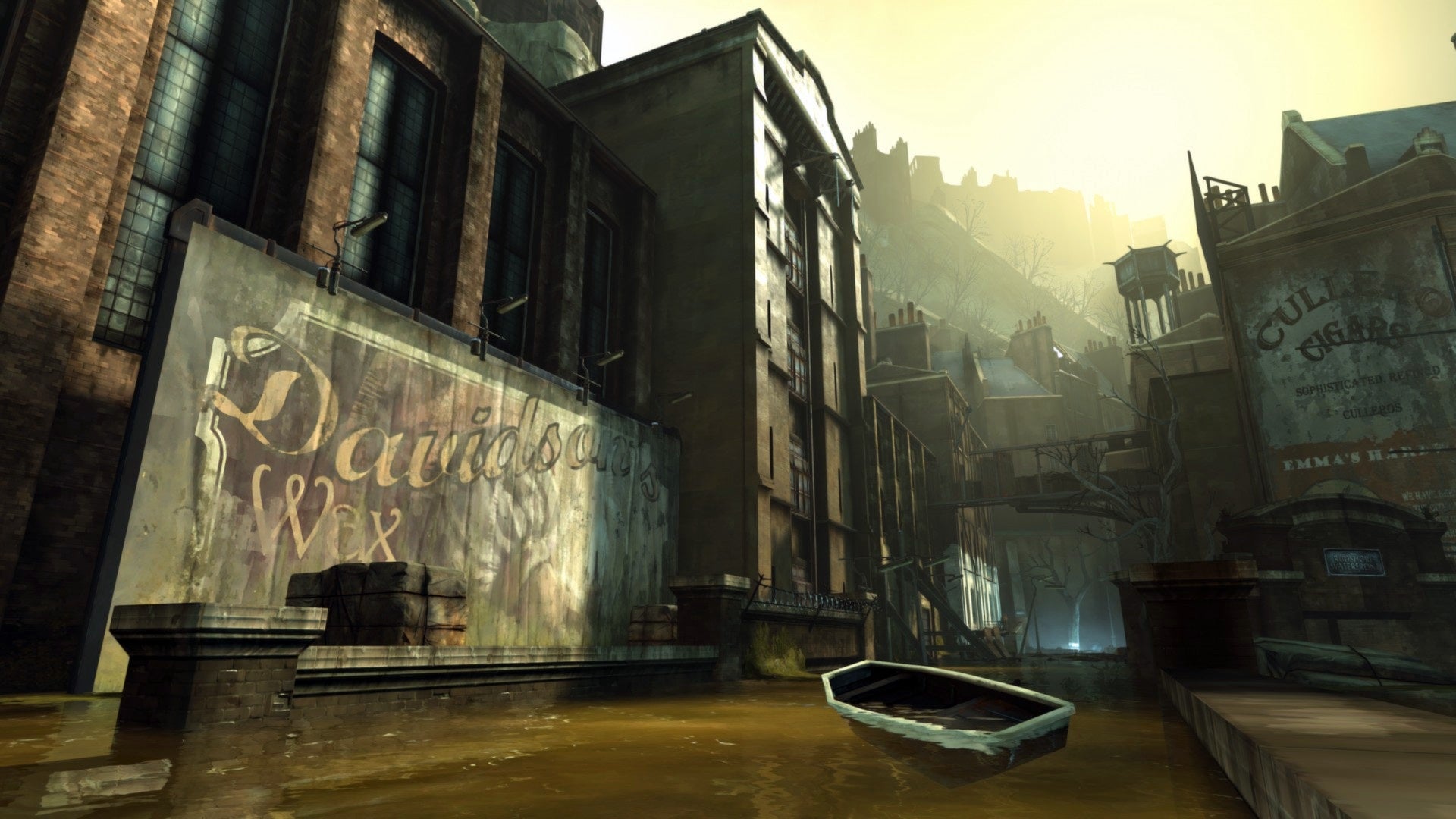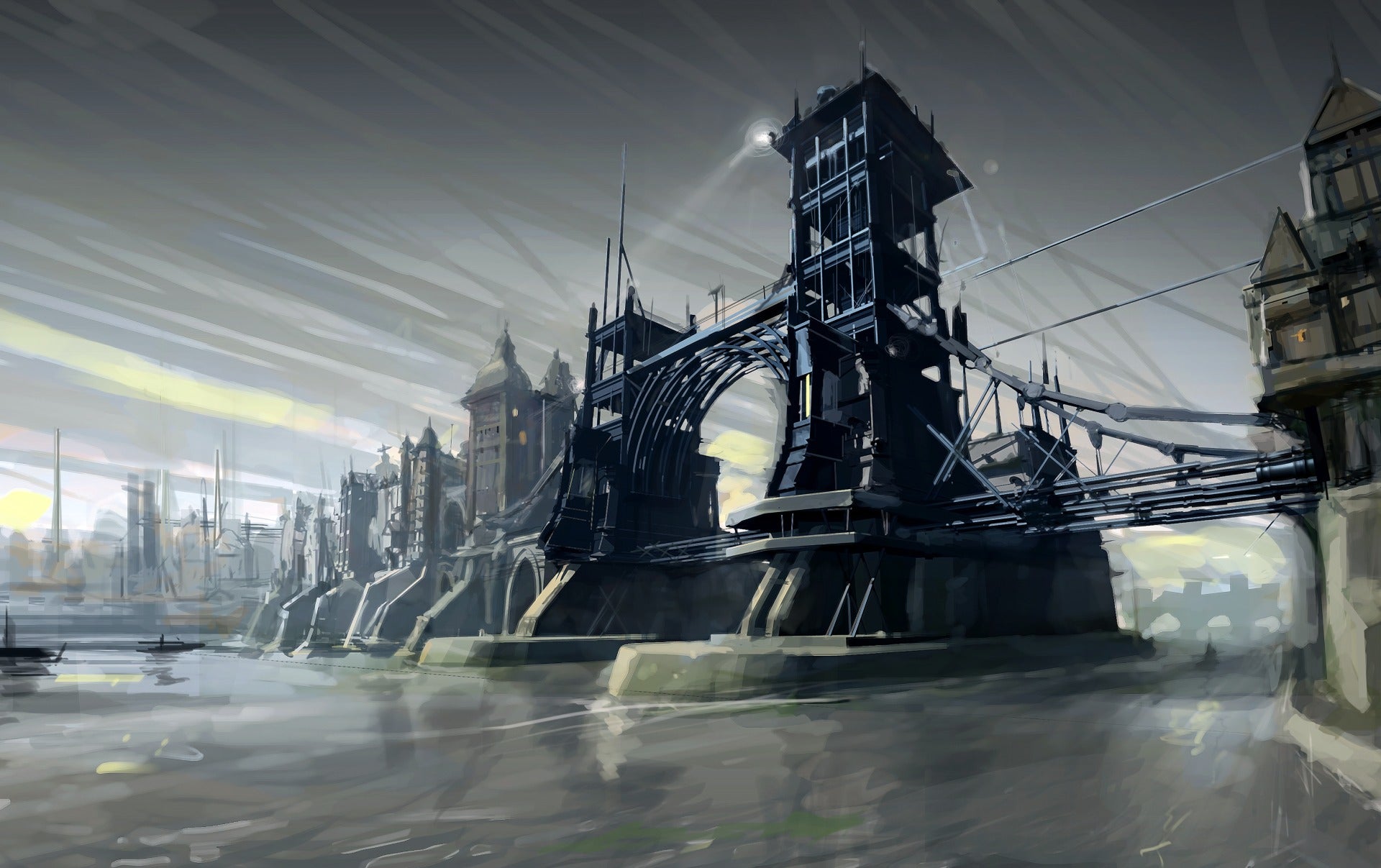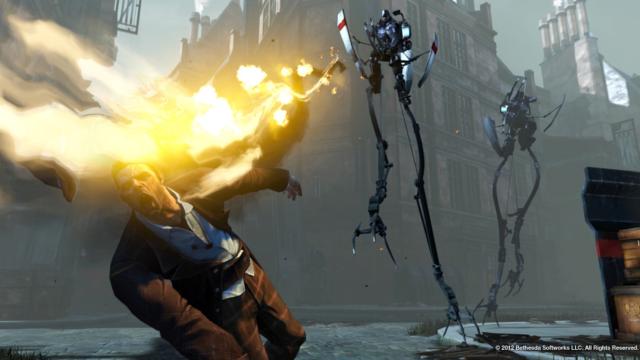Out of the thousands of games I’ve played, a handful have worlds so vivid and memorable, I can immediately call them to mind.The bustling Holy Land of 2007’s Assassin’s Creed, the industrial Midgar of 1997’s Final Fantasy VII (and its solid 2020 remake), the vast Tamriel of 2011’s The Elder Scrolls V: Skyrim. These are distinctive locations filled with iconic architecture and landscapes, settings I’ve always loved getting lost in for hours. But none of them come close to the atmospheric coherence of Dunwall in 2012’s Dishonored, a whaling city so rich in detail, so environmentally and thematically intertwined that it gives me the creeps. It’s a haunting backdrop for sneaking and stabbing, one that has stuck with me all these years later.
Developed by Arkane Studios and launched in October 2012 (making it 10 years old this month), Dishonored is a stealth action-adventure game where you play as master-bodyguard-turned-master-assassin Corvo Attano. Framed for a murder you didn’t commit, primarily because you didn’t have the powers or strength to prevent it, you find yourself locked up and awaiting execution in the brutalist-esque Coldridge Prison. However, just before it’s off with your head, you bust out of your jail cell (with the help of some shadowy organisation) and are gifted magic by some mysterious supernatural being known as The Outsider to exact your revenge and thwart a hostile governmental takeover by tyrannical dickheads who shouldn’t be in power at all. This makes up Dishonored’s narrative crux, sending you on a nine-mission-long adventure of assassinating the unsuspecting. But as compelling as the storytelling was, that wasn’t the draw for me. It was, and has always been, the unsettling world.
Everything Is Menacing, Even The Architecture
There’s a discomforting juxtaposition between classes in Dunwall. The industrial city, ravaged by a virulent and deadly contagion brought on by the rat plague, shows the proletariats suffering far more than the aristocracy for obvious reasons. Money does go far. But while the rich think they can escape from death, Corvo and Dunwall have another thing coming. As the late empress Jessamine Kaldwin said at the game’s start, everyone’s trapped in the cursed city because of the virus, condemned to die by either an infection in the body or a knife in the heart. It’s a tragedy deliberately facilitated by callous government officials who are (aside from Kaldwin herself) too unwilling to deal with the crisis despite wielding the resources to combat it. And you feel the weight of this inhumane decision all across Dunwall, as the disease everyone comes down with and the callous indifference of the powerful lead to alleyways inescapably lined with corpses. The soullessness of those in power is terrifying, especially when they hold your life in their selfish hands. At least Dunwall’s oppressors suffer the same fate because, with the mandated blockade issued by the religious monarchy, everyone’s doomed in the mostly walled city.
And those walls…They’re equally oppressive and intimidating. This isn’t the claustrophobic brutalism of Remedy Entertainment’s Control, but Dishonored’s Dunwall strikes a similar chord. The buildings in this game are these hulking, towering structures reaching toward the sky, occasionally making disconcerting creaks and groans like they feel the weight of your footsteps. Some of them are extravagant, adorned with exquisite drapery and opulent vases. Many are gothic, rusted, weary. But just about every building you come across, save for a few heavily protected areas (such as the pleasure house The Golden Cat), has been decimated by the plague in some way. Rooms are left empty, often with food still out and fireplaces still on. Rats skitter along the floors and streets, chewing on rotting flesh and bones. People are less frequent and those that are still around, because they have no choice but to stick around, criticise the conditions they’ve been placed under. Dunwall is a demoralized, dying city, one that is filled with the ever-present nightmare the rats brought with them.

The Decay, The Plague, The Rats…They Are Everywhere
That’s because the collapse of Dunwall was intentional. The disease, called The Doom of Pandyssia, originated in the city’s slums and other poor districts before beginning to make its way up the socioeconomic ladder. You’d think a rat plague would start infecting people at the docks, considering Dunwall’s a whaling city and rats love seaports. But instead, because the power-hungry obsessive Hiram Burrows lusts after ultimate control, he introduced the plague to the poor as a means of ending poverty — yes, by simply killing all the poor people — and restraining the city. Assuming you can subjugate an entire population through unsanctioned and unnecessary death is megalomaniacal enough already. To think you’d sit at the top and reign supreme, unscathed by the aftermath of your malicious decisions, is tyrannical fuckery to the highest degree. It’s this kinda heartlessness, this level of animosity toward the commonwealth, that’s left me frightened by the game’s elite but no less ready to plunge a sword into their necks.
I mean, it’s the bourgeoisie’s fault that Dunwall is decaying. I’m not gonna pretend that it was some thriving city on the cusp of technological innovation or anything, though there were some creative minds toiling away in the town’s recesses. However, it was the active choices of powerful arseholes hellbent on commandeering authority purely for narcissistic reasons that pushed the capital city to its demise. The ego is a strong, intimidating aspect of the personality that can lead to some terrifying circumstances if left unchecked. In that way, Dishonored could be viewed as an illustration of what happens when the ego has its way, and that allusion continues to haunt me.

I can’t forget the excellent score that underscores the game’s unsettling tone. An eerie set of songs mostly composed of sparse strings, discordant piano, and swelling organs, the soundtrack would almost fit perfectly over FromSoftware’s Bloodborne, or even a slasher flick like Halloween or a spoopy film such as The Nightmare Before Christmas. It’s a fittingly creepy mix of music as you plot — and execute — your vengeance against those who wronged you. There’a also each level’s sound design which, while mostly absent, does a great job at solidifying Dunwall’s emptiness.
A decade later and I’m still shuddering at the thought of trekking through Dishonored again. Not because the game’s terrible, far from it. I’m quaking because of the vacant city streets, the alarming rat plague, the dying citizens, the callous aristocrats. This is a world that, while on the verge of death, still teems with so much life and fear. And it’s that dichotomy that leaves me both scared for and prepared to face the consequences of my actions, as I hop from rooftop to rooftop, stabbing one rich arsehole at a time.

Leave a Reply